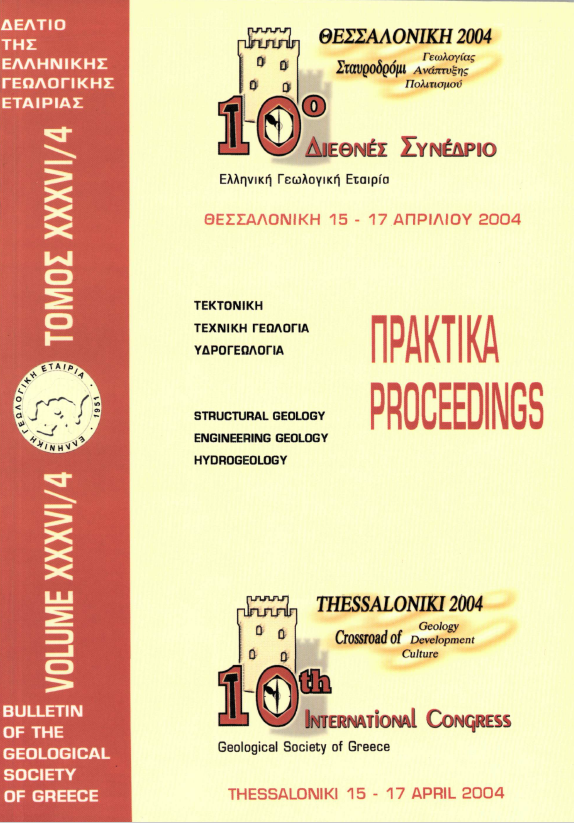SHEARD CLAYEY SHALES OF FLYSCH. THEIR BEHAVIOR DURING THE EXCAVATION OF THE DIVERSION TUNNEL OF GADOURA DAM IN RHODES (GREECE)
Abstract
This paper deals with the particular geological-geotechnical conditions that predominate in the construction area of the diversion tunnel of Gadoura dam (in Rhodes) and the way these conditions were taken under consideration during the construction of the temporary support system. The intensely sheared geological formation of flysch that is encountered in the construction area of the tunnel, is characterised by the predomination of clayey shales against siltstones and other lithological members (sandstone horizons, occasional gypsum lenses and limited limestone intercalations) and by the absence of a groundwater table. The main features of this argillaceous facies of flysch are: the schistosity-foliation due to tectonic compression and the chaotic structure, in places where it occurs in alternations with sandstone and siltstone, due to differential deformation of the strata. As a result, squeezing phenomena occured during the tunnel advance. According to the engineering geology model, which was proposed after the first excavation works, sheared clayey shales compose a "soil type" rockmass specified by very low geotechnical parameters (GSI=15-20, ITIJ=6, Oci=5-10 MPa, E m =30r>500 MPa, c'=150+250 kPa, φ=13°+18° και oCm=0,400,60 MPa). Performing a declined surface on the tunnel face, shotcrete and fiber glass anchoring, this weak rockmass was behaved well on the face. The applying of a light forpoling system has contributed to the stabilization of the face and of the cylindrical "core" of rock immediately ahead of the advancing face, although it was a conservative measure. Steel ribs incorporated into shotcrete were used for the support of the tunnel behind the face. Lateral forces were further stabilized by the closure of the invert using reinforced concrete. Weep holes were locally opened for the pore pressure relief.
Article Details
- How to Cite
-
Μαρίνος Π., Χριστοδουλοπούλου T., & Περλέρος Β. (2004). SHEARD CLAYEY SHALES OF FLYSCH. THEIR BEHAVIOR DURING THE EXCAVATION OF THE DIVERSION TUNNEL OF GADOURA DAM IN RHODES (GREECE). Bulletin of the Geological Society of Greece, 36(4), 1773–1780. https://doi.org/10.12681/bgsg.16637
- Section
- Engineering Geology, Hydrogeology, Urban Geology

This work is licensed under a Creative Commons Attribution-NonCommercial 4.0 International License.
Authors who publish with this journal agree to the following terms:
Authors retain copyright and grant the journal right of first publication with the work simultaneously licensed under a Creative Commons Attribution Non-Commercial License that allows others to share the work with an acknowledgement of the work's authorship and initial publication in this journal.
Authors are able to enter into separate, additional contractual arrangements for the non-exclusive distribution of the journal's published version of the work (e.g. post it to an institutional repository or publish it in a book), with an acknowledgement of its initial publication in this journal. Authors are permitted and encouraged to post their work online (preferably in institutional repositories or on their website) prior to and during the submission process, as it can lead to productive exchanges, as well as earlier and greater citation of published work.



